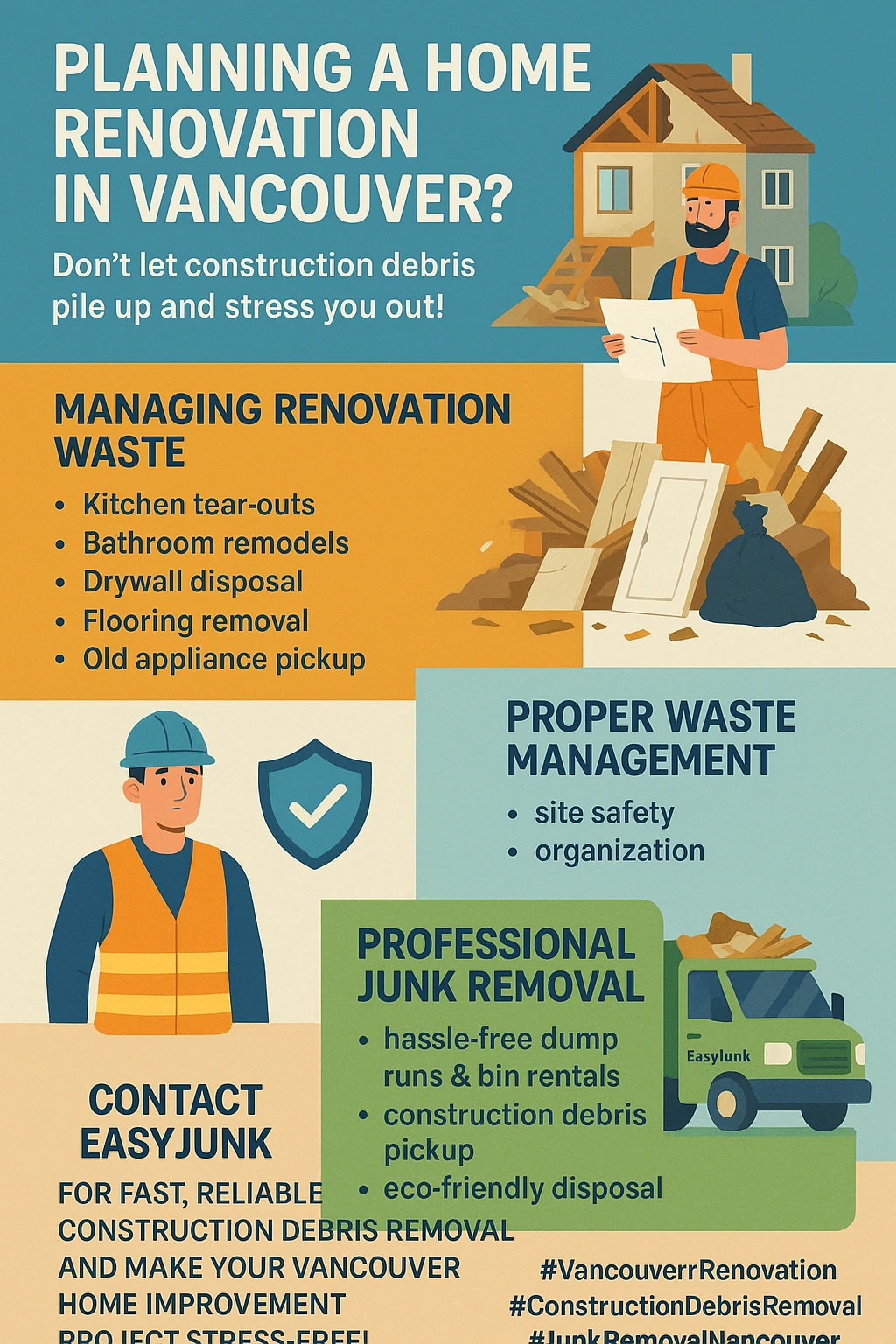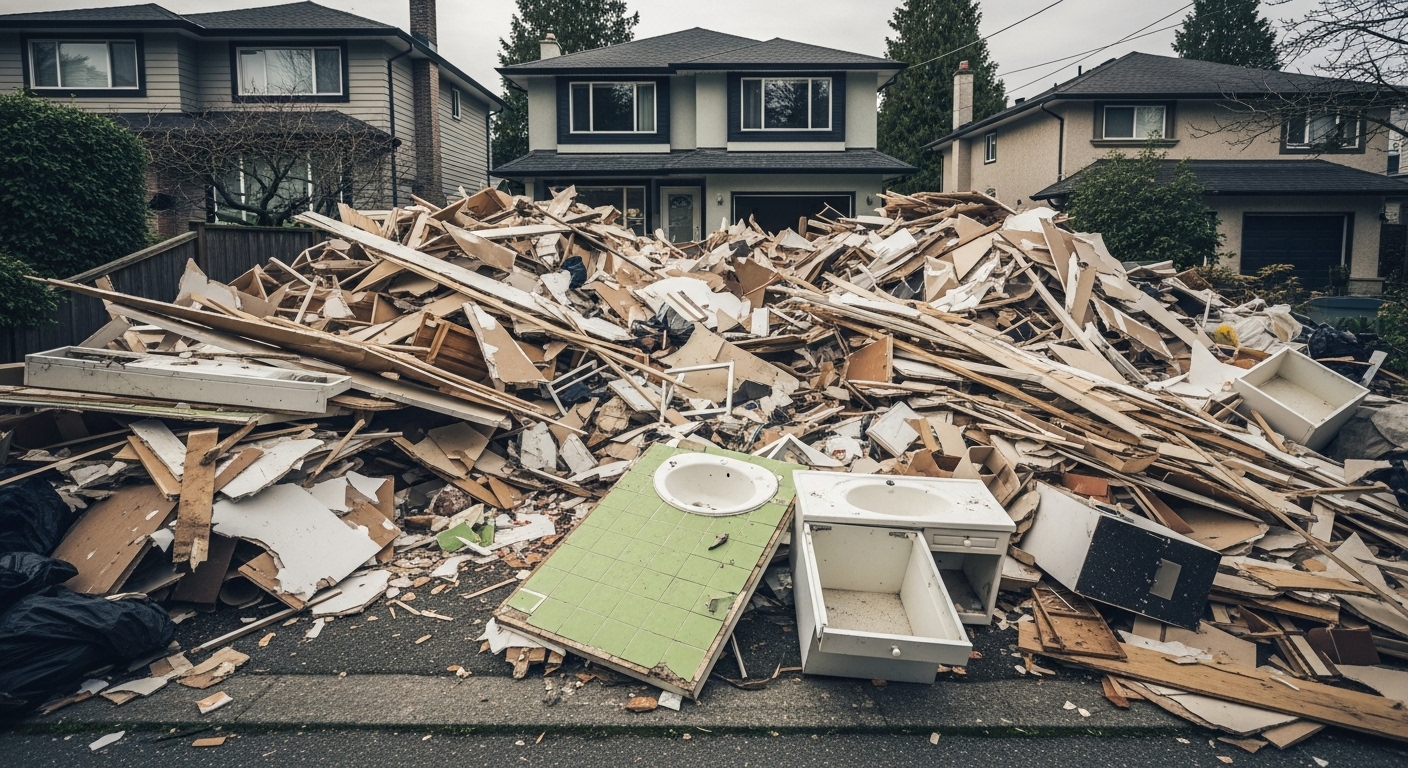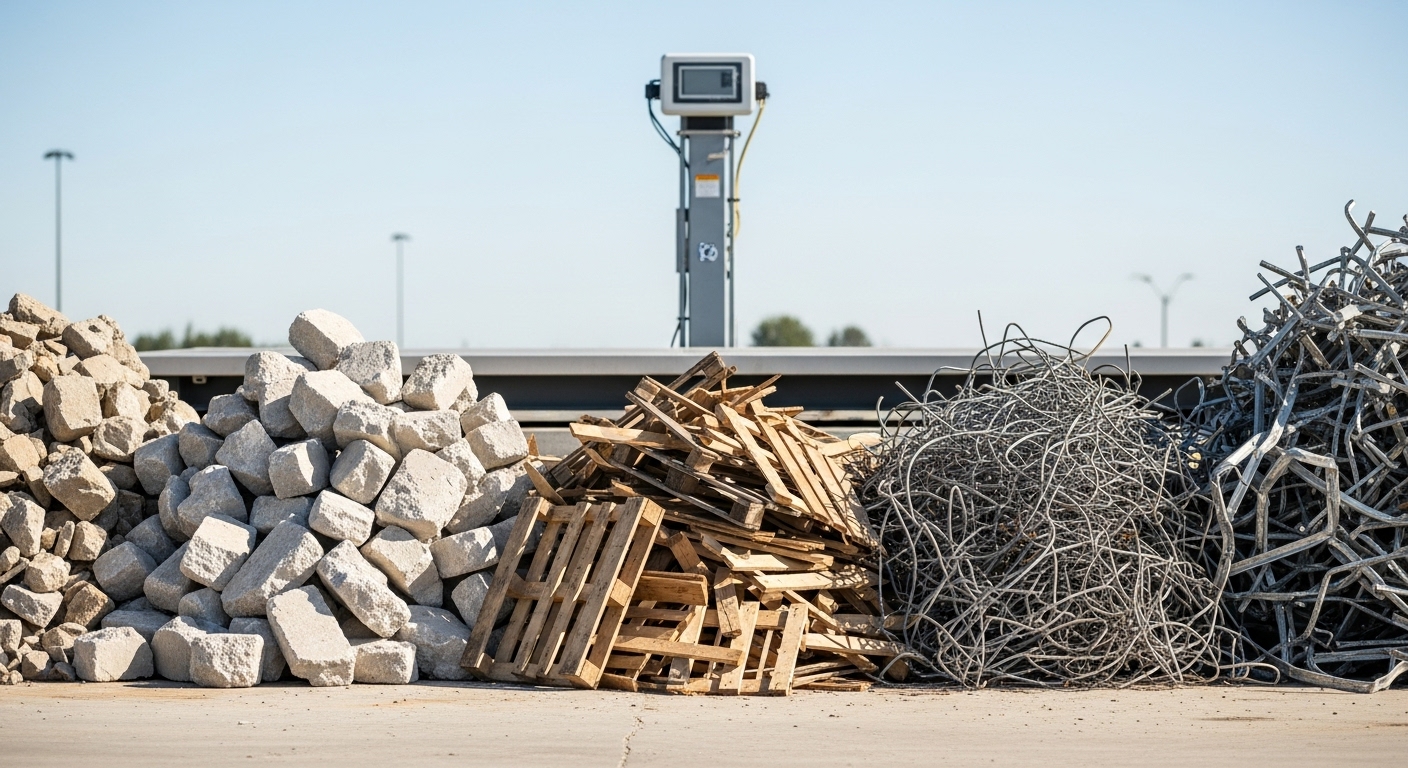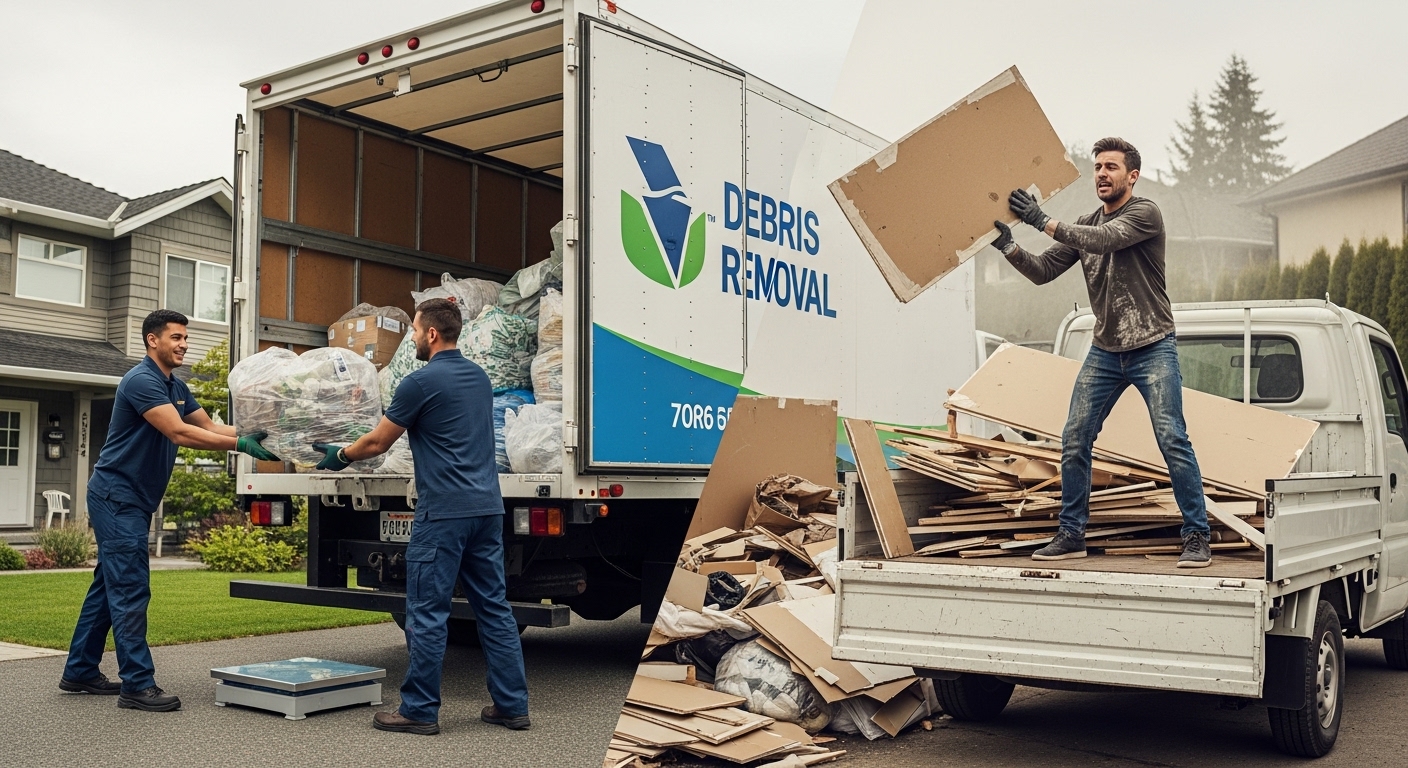Vancouver Home Renovation Debris Removal: A Complete Guide to Managing Construction Waste During Your Remodel
Ready to tackle that long-awaited kitchen reno but dreading the massive cleanup afterward? Let’s dive into everything you need to know about Vancouver home renovation debris removal – from sneaky permit requirements to why your neighbor’s “guy with a truck” might actually cost you more in the long run!Picture this: you’re halfway through gutting your 1970s bathroom (hello, avocado green tiles!), and suddenly you’re staring at a mountain of debris that looks like it could swallow your driveway whole. Between the old vanity, chunks of drywall, and that questionable flooring that may or may not contain asbestos, you’re basically drowning in renovation chaos. Sound familiar? Trust me, every Vancouver homeowner who’s ever wielded a sledgehammer has been there. The thing is, managing construction waste in Vancouver isn’t just about making that mess disappear – it’s about navigating a maze of municipal regulations, understanding what materials can actually be recycled, and avoiding those sneaky costs that pop up when you least expect them. Whether you’re a weekend warrior DIYer or working with contractors, getting your debris removal strategy right can literally save you thousands while keeping you on the right side of city bylaws.What makes Vancouver particularly tricky is our city’s commitment to environmental sustainability, which means there are some pretty specific rules about where your old kitchen cabinets can and can’t end up. Plus, with renovation costs in our city already sky-high, smart waste management isn’t just environmentally responsible – it’s financially essential.
Key Outtakes:
- Vancouver requires 75% waste diversion rates for deconstruction projects through its voluntary advanced permit system, offering permit holders 50% disposal discounts and scheduling advantages
- Construction waste disposal costs range dramatically from $54 per tonne for clean concrete to $342 per tonne for treated lumber at local facilities
- Professional debris removal services use Measurement Canada-certified scales for exact pay-by-weight pricing, eliminating volume-based overcharging common with traditional bin rentals
- Hazardous material assessments are mandatory for buildings constructed before 1990 under WorkSafeBC regulations, with professional inspection required before any demolition work begins
- DIY disposal requires fall protection equipment and specialized training, while loads over 50 cubic metres must use tandem or tridem trailers at municipal facilities

Understanding Vancouver’s Renovation Waste Categories and Municipal Requirements
Before you even swing that first hammer, you need to understand that Vancouver treats construction debris like a complex puzzle with very specific pieces that go in very specific places. This isn’t your typical “chuck it all in a dumpster” situation – our city has some pretty sophisticated requirements that can make or break your renovation timeline. Vancouver’s municipal waste acceptance criteria are refreshingly detailed but can feel overwhelming when you’re just trying to get rid of old flooring. The city accepts wood that hasn’t been treated with creosote, but here’s the kicker – it needs to make up at least 80% of your load volume, with soft construction materials limited to just 2% of the total load. That means if you’re mixing materials, you better know your percentages.What really surprised me when I first dug into this was learning that construction and demolition materials make up about one-third of all waste heading to our regional landfills. Wood and plastic are the biggest culprits, which makes sense when you think about how many homes in Vancouver are getting those gorgeous kitchen makeovers with new cabinetry and countertops. The sheer volume is staggering.The reality is that renovation projects commonly generate 22 different types of waste materials. We’re talking concrete, asphalt, scrap wood, various metals, drywall chunks, insulation, carpeting, tiles, fixtures, and so much more. Each category has its own disposal pathway, recycling potential, and associated costs. It’s like playing material Tetris, except the stakes are your budget and project timeline.What makes Vancouver unique compared to other cities is how seriously we take waste diversion. This isn’t just feel-good environmental policy – it’s backed by real regulations and financial incentives that can significantly impact your renovation costs. Understanding these categories upfront isn’t just helpful; it’s essential for any homeowner planning a substantial remodel.
Vancouver’s municipal waste acceptance criteria are refreshingly detailed but can feel overwhelming when you’re just trying to get rid of old flooring. The city accepts wood that hasn’t been treated with creosote, but here’s the kicker – it needs to make up at least 80% of your load volume, with soft construction materials limited to just 2% of the total load. That means if you’re mixing materials, you better know your percentages.What really surprised me when I first dug into this was learning that construction and demolition materials make up about one-third of all waste heading to our regional landfills. Wood and plastic are the biggest culprits, which makes sense when you think about how many homes in Vancouver are getting those gorgeous kitchen makeovers with new cabinetry and countertops. The sheer volume is staggering.The reality is that renovation projects commonly generate 22 different types of waste materials. We’re talking concrete, asphalt, scrap wood, various metals, drywall chunks, insulation, carpeting, tiles, fixtures, and so much more. Each category has its own disposal pathway, recycling potential, and associated costs. It’s like playing material Tetris, except the stakes are your budget and project timeline.What makes Vancouver unique compared to other cities is how seriously we take waste diversion. This isn’t just feel-good environmental policy – it’s backed by real regulations and financial incentives that can significantly impact your renovation costs. Understanding these categories upfront isn’t just helpful; it’s essential for any homeowner planning a substantial remodel.
Cost Breakdown: What You’ll Actually Pay for Debris Removal in Vancouver
Now that we’ve covered what goes where, let’s talk about everyone’s favorite topic – money. Renovation debris removal costs in Vancouver can feel like solving a math equation with variables that keep changing, but understanding the pricing structure can save you from some nasty surprises.The cost landscape has shifted dramatically toward pay-by-weight models, and honestly, this is fantastic news for homeowners who do their homework. Professional services using certified scale systems charge a base rate for the first 200 pounds, then add additional waste at competitive per-pound rates. This eliminates the guesswork and prevents the volume-based overcharging that traditional bin services are notorious for.Here’s where it gets interesting – disposal fees at Richmond facilities range from $54 per tonne for clean concrete all the way up to $342 per tonne for treated lumber. That massive spread means material segregation isn’t just environmentally responsible; it’s financially smart. If you can separate your clean concrete from your mixed construction debris, you’re looking at potential savings of over $140 per tonne.  Professional debris removal labor costs typically range from the mid-$80s to the high $600s, depending on volume and complexity. For most standard renovation projects in Vancouver, you’re looking at total disposal costs between $1,000 and $3,000. That might sound like a lot, but when you factor in the time, equipment, and regulatory compliance involved in DIY disposal, professional services often provide better value than they initially appear.The hidden costs are where many homeowners get blindsided. Things like hazardous material handling, permit processing fees, and seasonal demand surges can add unexpected charges to your bill. Summer renovation season in Vancouver creates a perfect storm of high demand and limited disposal facility capacity, which inevitably drives prices up across the board.
Professional debris removal labor costs typically range from the mid-$80s to the high $600s, depending on volume and complexity. For most standard renovation projects in Vancouver, you’re looking at total disposal costs between $1,000 and $3,000. That might sound like a lot, but when you factor in the time, equipment, and regulatory compliance involved in DIY disposal, professional services often provide better value than they initially appear.The hidden costs are where many homeowners get blindsided. Things like hazardous material handling, permit processing fees, and seasonal demand surges can add unexpected charges to your bill. Summer renovation season in Vancouver creates a perfect storm of high demand and limited disposal facility capacity, which inevitably drives prices up across the board.
Service Options: Professional vs. DIY vs. Alternative Solutions
Choosing how to handle your renovation debris removal feels a bit like choosing your own adventure, except some paths lead to municipal fines and others to back injuries. Let me break down the real-world implications of each approach so you can make an informed decision that fits your budget, timeline, and sanity level.  Professional removal services have evolved significantly beyond the “guys with a truck” stereotype. Modern services use specially modified vehicles with Measurement Canada-certified scales, providing precise weight-based pricing that eliminates the guesswork. They offer same-day availability throughout Vancouver and surrounding areas, which is clutch when your renovation timeline gets compressed or when you suddenly realize that old bathtub isn’t fitting through the door frame.The DIY route requires more preparation than most homeowners anticipate. Vancouver Landfill operations run Monday through Friday, 7:30am to 3:00pm, excluding holidays. You’ll need fall protection harnesses and must complete mandatory training for their tarp removal systems. Loads over 50 cubic metres require tandem or tridem trailers, which means you’re either renting specialized equipment or making multiple trips.What many people don’t realize is that DIY disposal involves strict material ratio requirements. Your load composition needs to meet specific criteria, and facility staff will reject loads that don’t comply. I’ve heard horror stories of homeowners making the trek to the landfill only to be turned away because their material mix didn’t meet acceptance standards, then having to pay professional services anyway.Bin rental alternatives occupy a middle ground but come with their own complications. You need adequate space for delivery and pickup, plus most services charge by volume rather than weight, which can result in paying for air space. In Vancouver’s dense neighborhoods, space constraints often make bins impractical, and you’re still responsible for loading everything yourself.The reality is that each option has its place depending on project scope, timeline flexibility, and your comfort level with regulations and heavy lifting. Professional services shine for complex projects or tight schedules, while DIY can work for smaller, straightforward cleanups where you have time flexibility and proper equipment access.
Professional removal services have evolved significantly beyond the “guys with a truck” stereotype. Modern services use specially modified vehicles with Measurement Canada-certified scales, providing precise weight-based pricing that eliminates the guesswork. They offer same-day availability throughout Vancouver and surrounding areas, which is clutch when your renovation timeline gets compressed or when you suddenly realize that old bathtub isn’t fitting through the door frame.The DIY route requires more preparation than most homeowners anticipate. Vancouver Landfill operations run Monday through Friday, 7:30am to 3:00pm, excluding holidays. You’ll need fall protection harnesses and must complete mandatory training for their tarp removal systems. Loads over 50 cubic metres require tandem or tridem trailers, which means you’re either renting specialized equipment or making multiple trips.What many people don’t realize is that DIY disposal involves strict material ratio requirements. Your load composition needs to meet specific criteria, and facility staff will reject loads that don’t comply. I’ve heard horror stories of homeowners making the trek to the landfill only to be turned away because their material mix didn’t meet acceptance standards, then having to pay professional services anyway.Bin rental alternatives occupy a middle ground but come with their own complications. You need adequate space for delivery and pickup, plus most services charge by volume rather than weight, which can result in paying for air space. In Vancouver’s dense neighborhoods, space constraints often make bins impractical, and you’re still responsible for loading everything yourself.The reality is that each option has its place depending on project scope, timeline flexibility, and your comfort level with regulations and heavy lifting. Professional services shine for complex projects or tight schedules, while DIY can work for smaller, straightforward cleanups where you have time flexibility and proper equipment access.
Hazardous Materials: Navigating Safety and Compliance Requirements
Here’s where renovation debris removal gets serious, and honestly, it’s the area where trying to save money can cost you the most in the long run. Vancouver’s older housing stock means asbestos, lead, and other hazardous materials are legitimate


